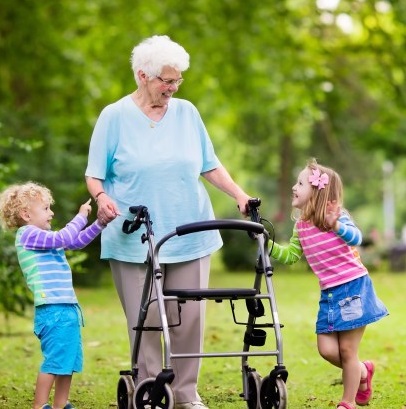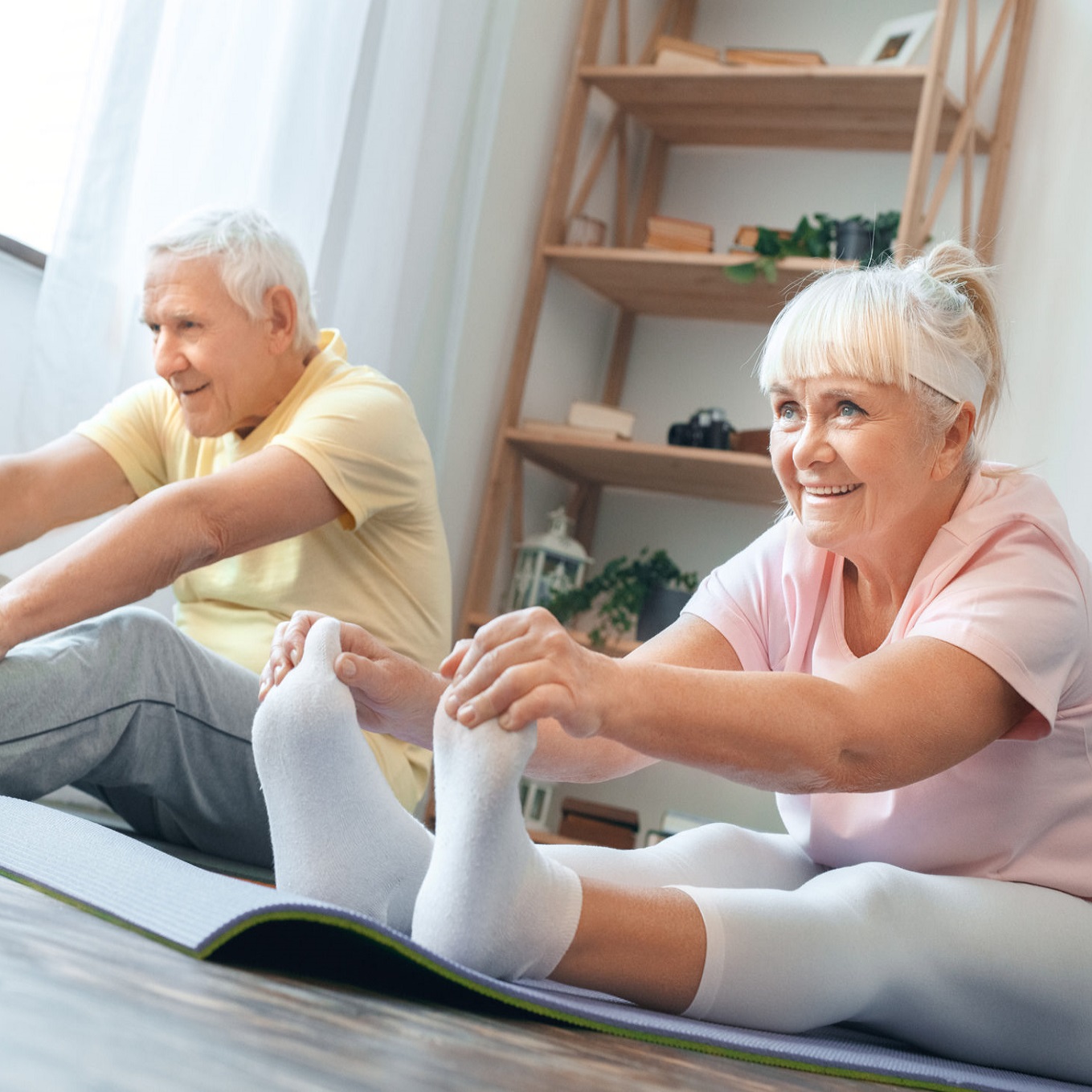At-Home Workouts for Seniors

May 14, 2020
Staying in during COVID-19 restrictions shouldn’t mean spending hours on the couch, especially for seniors.
“It is always important for older adults to exercise to help improve their overall immunity, but especially now during the spread of COVID-19, when they are at greater risk of complications from the virus,” says Jorge F. Corzo, M.D., director of physical medicine and rehabilitation, Riverview Medical Center. Other benefits to exercising include increasing strength and flexibility, which can help reduce the risk of falls, stress relief and better sleep.
So, what can active adults do easily at home? Here are simple exercises that can be done while watching your favorite show or outside in your backyard getting some fresh air.
Stretch out your upper body – Stand with feet hip width apart, extend arms overhead interlacing fingers. Gently lean to the left, hold for 20 seconds. Return to center and repeat on other side. This can also be done from a sitting position.
Knee to chest stretches – Lie flat on floor with legs extended. If uncomfortable, bend knees with feet flat on floor. Bring your right knee toward your chest slowly; grasp the back of your thigh to hold this position for 20 seconds. Then switch legs and repeat 10 times per leg. This stretch can also be done from a seated position.
Wall push-ups – Stand three feet away from a wall with your feet shoulder-width apart and hands flat on the wall. Lower your body toward the wall, with the spine straight in a plank position, and then push back. Repeat 10 times. This helps improve shoulder and chest strength.
Step up, step down – Wear supportive shoes and step up, then down, on the bottom step of a staircase. No need to walk all the way up and down the stairs. This simple up and down step will suffice. Repeat 20 times, then rest for a minute, repeat again.
Pilates or yoga online – Both of these programs are low-impact and help build muscle strength and total body mobility. Free online classes are readily available to watch and exercise along with the instructor. You can learn the moves, then start out slowly and go at your own speed.
Chair yoga – If you’re starting out with yoga or have balance issues, you can still perform yoga moves sitting in a chair. Sit up straight, then lead forward to lay your torso on your thighs. Take five deep, even breaths while in this position. You’ll stretch your spine and back muscles, while massaging your intestines.
Take a walk – Start out slowly and gradually add more time to your walks. It’s a great way to get fresh air and is totally free. You might also have social engagement with neighbors while observing physical distancing. That is good for both mind and body.
Resistance/Weight training – You don’t need gym equipment to train while at home. Rope or nylon ties (check your garage) are ideal to use as resistance bands. Try an old, stretched out t-shirt, too. Even a towel could be used, pulling in opposite directions with both hands above your head. Try using that soup can in your pantry or a full bottle of shampoo as a “weight”. Fill an empty water bottle with sand or cat litter. You can “move up” to heavier items like filled gallon size bottles.
Breaking simple exercise routines into small, achievable segments is okay, too. Perform any of these exercises for 10-15 minutes, then again, a couple more times during the day. Mix up the exercises to provide variety. And make sure to play your favorite music to provide inspiration and focus.
Next Steps & Resources:
- How to Sleep Better During the Coronavirus Crisis
- How to Grocery Shop Safely During the COVID-19 Pandemic
- Should I Babysit My Grandkids Amid Coronavirus Outbreak?
The material provided through HealthU is intended to be used as general information only and should not replace the advice of your physician. Always consult your physician for individual care.
Find a doctor near me
How to Help Prevent Falls for Seniors

Prevent senior falls. Learn simple steps to improve safety at home and reduce fall risk. Bayshore Medical Center offers expert advice and rehabilitation.
How Seniors Can Increase Hip Strength

Increasing hip strength can reduce risk of falls and fractures and make day-to-day activities more enjoyable.
